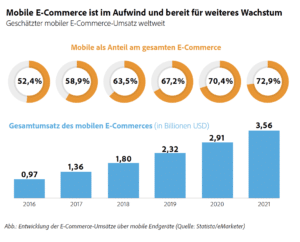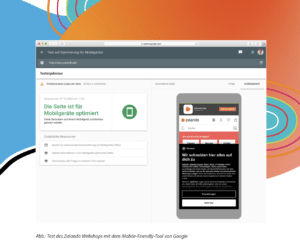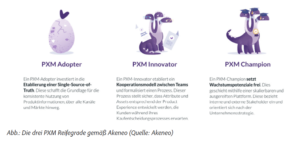E-Commerce- and Digital-Trends 2021 2/4
A digital boost from Corona? To what extent could the digital industry benefit from the pandemic? And what are the trends for 2021?
Just in time for the new year, software providers Adobe and Akeneo, together with their implementation partner TechDivision, took a look into the crystal ball and identified some of the most exciting topics and developments, which we naturally don’t want to deprive you of.
Josef Willkommer, co-founder and CMO of TechDivision has identified 11 upcoming trends. The first three of these trends can be found here. The next 3 are presented below. You can already look forward to the upcoming ones!
Trend Number 4: Mobile Commerce
Various market research companies assume that by the end of 2021, almost 73% of all e-commerce sales will be made via mobile devices – especially smartphones. In addition, around 30% of online shoppers will abandon their online purchase if the corresponding web store is not optimized for mobile devices and as easy to use as possible.
In this respect, the mobile-first approach will become even more relevant in the coming year than it has been in the past. As a store operator, you should therefore – if you have not already done so – pay particular attention to the best possible usability and user experience with mobile devices.
There are some quite helpful tools for this. Among other things, Google offers the Mobile-Friendly-Test, a very useful and free application with which you can check your web presence or web store in terms of mobile usability. All you need to do is enter the relevant URL.
After entering the URL, Google analyzes the web presence, evaluates the mobile readiness and provides concrete tips and suggestions for improvement in order to provide the best possible user experience for mobile users in the future.
Last year, we already mentioned so-called Progressive Web Apps (PWA) as a trend for 2020. This trend has become even more pronounced and Google, as the initiator of PWA technology, is continuing to step on the gas here in order to position the topic even more strongly in the market, as we believe that the future will primarily take place on mobile – both in the B2C and increasingly in the B2B environment. PWAs combine the advantages of mobile websites, such as faster and more cost-effective development and platform independence, with the advantages of native apps. These include better performance and the ability to use certain features of the smartphone, such as the camera.
As mobile commerce continues to grow, we also expect voice input to gain in importance as the most natural and convenient form of input in the coming year. There are exciting use cases for this, and not just in the B2C environment. Just think, for example, of a mechanic who has to order a spare part with dirty fingers and/or gloves. Voice input could be a suitable approach here in the future.
Currently, the challenge is that most web stores or apps do not offer voice-based navigation, so that prospective customers sometimes have to switch to a corresponding input device after they have started using voice control. We expect that in 2021 investments in optimizing content for voice search will increase significantly and that more and more web stores will also enable checkout via voice input. Corresponding plug-ins are now provided by various store software providers. This also includes Magento Commerce.
Trend Number 5: Web Stories
People love stories – both in their private lives and in a business context. A very exciting experiment – the so-called Significant Object Project – proves that this is true and that companies can also profit massively from stories about products and/or services. In 2009, two Americans bought “junk” items for a few dollars at flea markets and had professional authors write fictional stories about these items. The products were then sold together with the stories on eBay, with an extremely impressive result: The stories increased the cost price of the items from a total of just over 100 dollars to more than 3,600 dollars – just through the power of stories!
Providers of various social platforms have recognized the power of stories for quite some time and now almost all well-known platforms offer corresponding tools and possibilities to publish short and crisp stories either with text, images or a mixture of both.
Google wouldn’t be Google if they hadn’t recognized this fact long ago and now offer their own format with the so-called Google Web Stories, which they are now also massively pushing. Until May of last year, however, the whole thing was still called AMP Stories.
Google Web Stories are a new form of the so-called Accelerated Mobile Pages (AMP). These are contents that are to be consumed in small bites. Each page of a Web Story contains a maximum of 10 words. The recommended size of a web story is between four and 30 pages. Publishers can monetize Web Stories with affiliate links, Google Ad Manager, and Google DV3608 (beta).
Web Stories are primarily intended for mobile users who want to consume content at a glance. Google describes the typical content consumer as someone on the subway or at lunch.
The following table illustrates the differences between Google Web Stories and Stories on various social media platforms such as Instagram or Facebook.
More and more publishers and content providers are adopting the web story format because it can be presented in an attractive way for mobile users. Web Stories represent a new way to generate a significant amount of traffic, and Google itself is now using the format more and more – for example, in Google News or in the Google App. Web Stories are interactive, consisting of both static images and videos, which are accompanied by short and snappy texts to attract attention.
The big difference of Google Web Stories compared to Facebook or Instagram stories, for example, is that each story has a URL. That is, it is a small web page, which in turn they can embed in your existing web presences and even share via email.
Web Stories can also be indexed and found via Google search. In the Google search results, Web Stories are particularly highlighted and can thus achieve quite a bit of attention.
A desktop example of a quite nice Web Story has been created by Samuel Schmitt at the following link: https://samuelschmitt.com/kira-the-cat.html
He also offers a very comprehensive article with interesting facts about AMP Stories, which have since been renamed Web Stories.
At the following link you can also find a presentation from this year’s ECC Forum, which introduces the topic of Web Stories, the associated possibilities and advantages, as well as some practical use cases, for example by using the Adobe Experience Manager: https://info2.magento.com/Online-Geschichten-erzaehlen-mit-Web-Stories.html
Trend Number 6: Product Experience Management (PXM)
E-commerce is constantly changing. Today, more than ever, customers demand a compelling and consistent brand experience wherever they shop. The goal of any manufacturer or retailer today is to provide a superior and unique shopping experience, resulting in higher conversion rates, lower returns, improved customer satisfaction and increased brand loyalty.
To do this, manufacturers and retailers must deliver a compelling and coherent story at all digital touchpoints throughout the shopping process.
Now that sounds all well and good – but how do you do it in practice? How can companies deliver product and shopping experiences and compelling content in the right context and for the appropriate channel?
Product Experience Management (PXM) is a relatively new discipline and in principle the logical and consistent further development of the familiar Master Data or Product Information Management (PIM). Essentially, PXM is about the provision of product information, which is, however, adapted and played out in the respective context – i.e. depending on the respective channel and the customer journey. While the PIM environment is about describing items and thus the “what”, PXM addresses the “how” and thus tries to enable real shopping experiences.
In summary, PXM is about being able to provide the necessary basis for the best possible purchase decision by providing comprehensive product master data and basic information on the one hand (=obligation) and on the other hand to deliver added value to customers and prospects in the form of content elements (descriptions, background information, images, graphics, videos, etc.) that are precisely tailored to the respective channel and the sales situation in order to enable a real shopping experience there.
The PXM software provider Akeneo now offers a so-called PXM Maturity Assessment for this purpose. After answering 14 questions, interested companies receive a customized evaluation regarding their product experience management with concrete recommendations for action as well as a comparison to other companies. The test can be carried out free of charge under the following URL: https://www.techdivision.com/lp/pxm-assessment.
Akeneo distinguishes between the following maturity levels of product experience management:
Source of the text excerpt: https://www.techdivision.com/lp/e-commerce-und-digital-trends-2021







